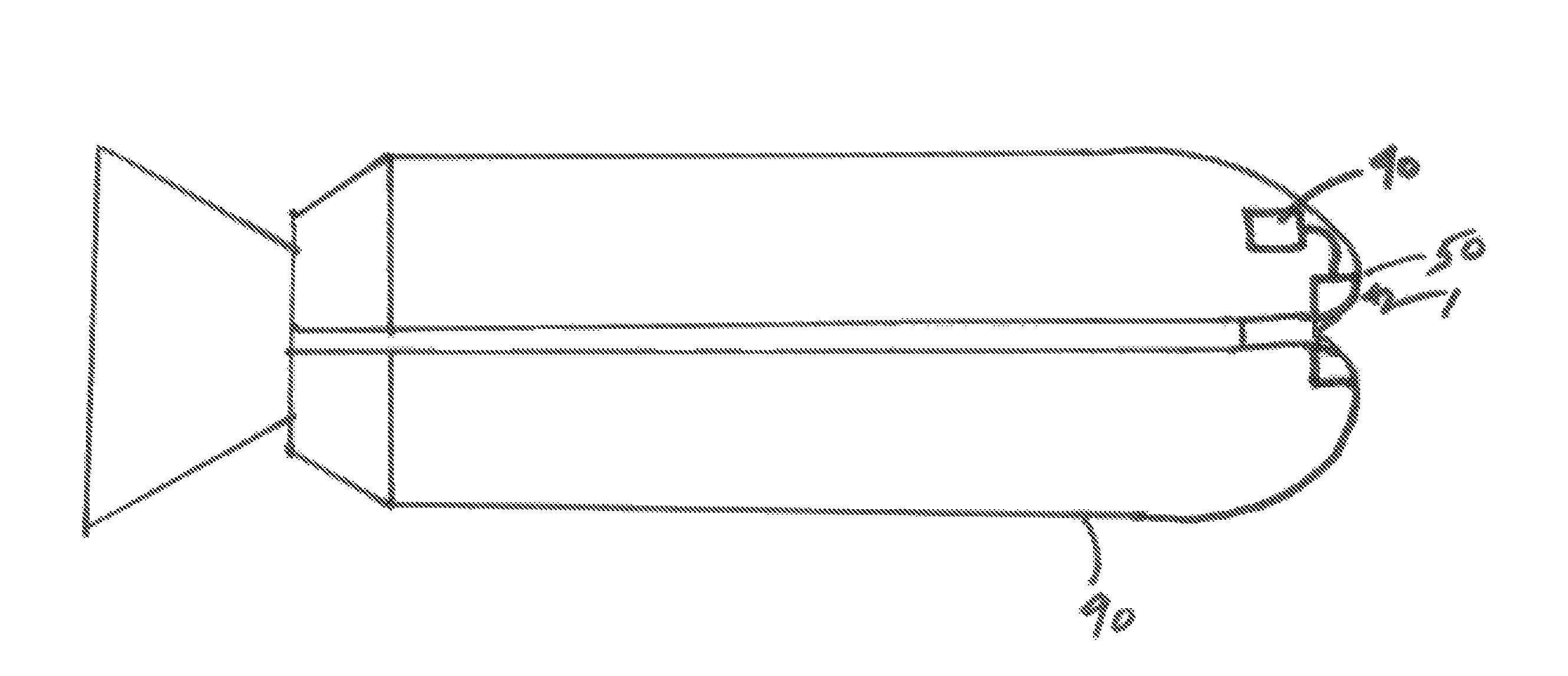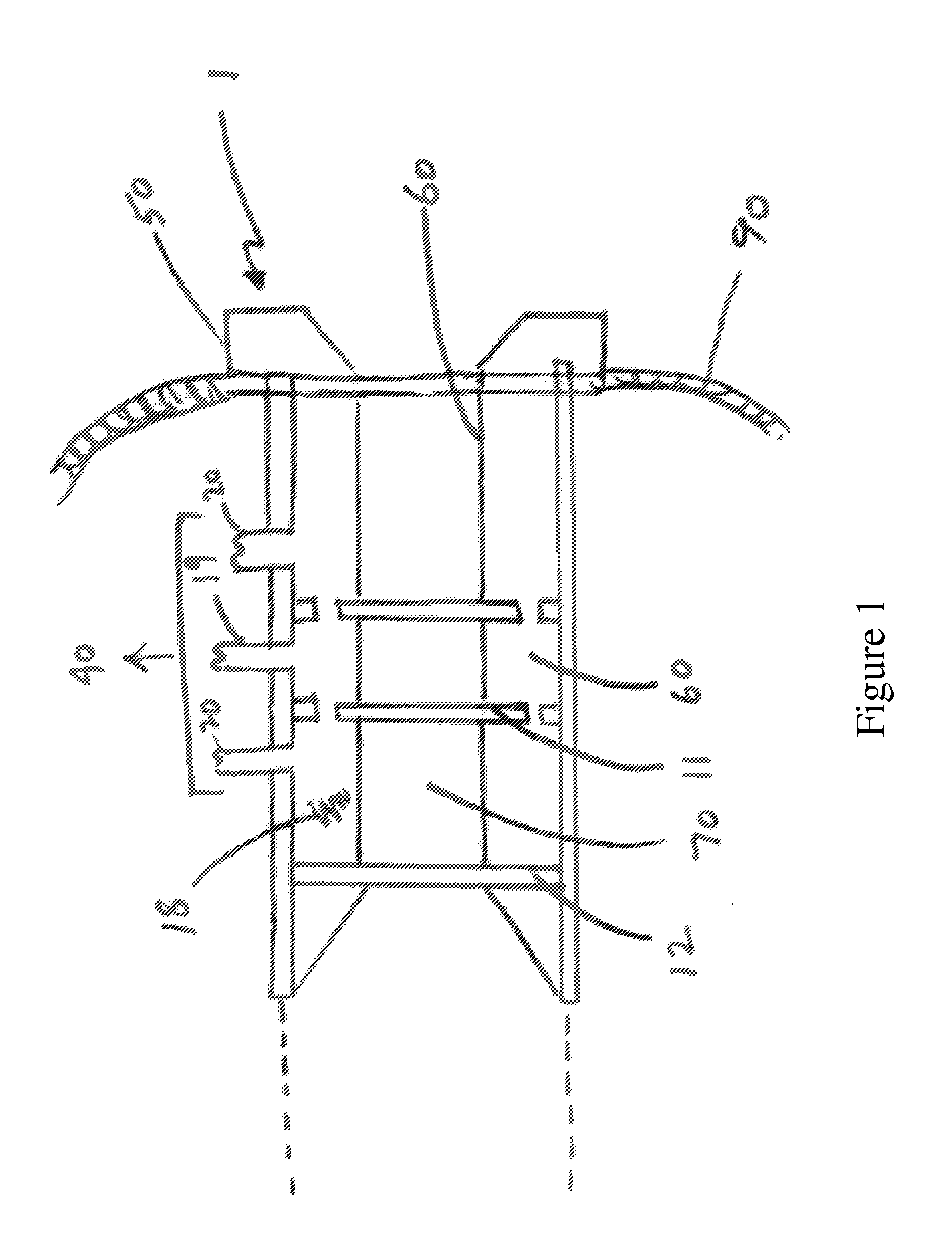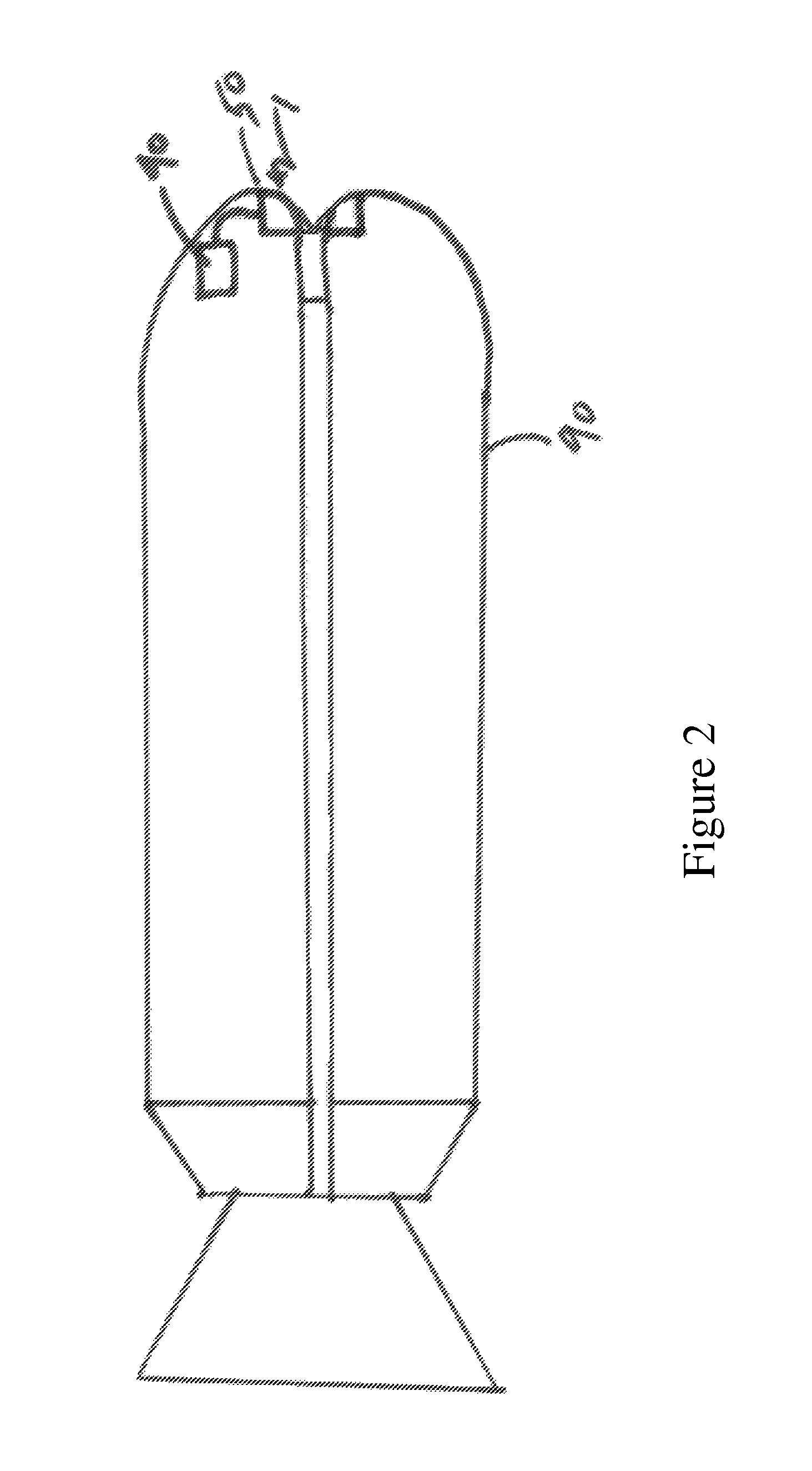Apparatus and methods for hypersonic nosecone
a technology of nosecone and apparatus, which is applied in the field of systems, apparatus and methods for the reduction of drag in spacecraft or missiles, can solve the problems of nosecone increasing beyond the failure point, and achieve the effect of reducing drag
- Summary
- Abstract
- Description
- Claims
- Application Information
AI Technical Summary
Benefits of technology
Problems solved by technology
Method used
Image
Examples
Embodiment Construction
[0014]Referring to FIG. 1 which illustrates the components of the conductive nose cone 1. A cooling fluid 18, typically liquid nitrogen, circulates by injection by the input line 19 into the shaft 60, and exiting via the exit lines 20. The cooling fluid 18 is provided by the cooling fluid source 40.
[0015]Inside the shaft 60, is a space for the cooling fluid 18. A perforated Teflon w washer 11, glass tube 12, laser aiming point 13 and thermocouple sensor probe 14. The incoming hypersonic streamline 17 is instantaneously transformed into a rotation vector as a consequence of rapid harmonic / isothermal compression surges on the reaction plane 112.
[0016]The thermally conductive cone 1 is composed of a tip 50, a shaft 60, and a bore 70. The entry part of the tip 50 has an intake area that is larger in circumference that the bore 70. The angle of intake area is approximately 30-60 degrees relative to a line drawn in parallel with the bore edge. In a representative embodiment, the intake bo...
PUM
 Login to View More
Login to View More Abstract
Description
Claims
Application Information
 Login to View More
Login to View More - R&D
- Intellectual Property
- Life Sciences
- Materials
- Tech Scout
- Unparalleled Data Quality
- Higher Quality Content
- 60% Fewer Hallucinations
Browse by: Latest US Patents, China's latest patents, Technical Efficacy Thesaurus, Application Domain, Technology Topic, Popular Technical Reports.
© 2025 PatSnap. All rights reserved.Legal|Privacy policy|Modern Slavery Act Transparency Statement|Sitemap|About US| Contact US: help@patsnap.com



